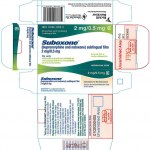Inside the secret lives of functioning heroin addicts
I’ve met many a functioning heroin addict over the years. Of course, by the time they meet somebody in my job, “functioning” is often a thing of the past. Still, they may present long, documentable histories of apparently productive work, creativity, relationships, etc., concurrent with steady heroin use.
A few examples:
- A 32 year old woman, respected in the film community, whose heroin use began at 21, first via smoking, then by injection. According to her longtime agent, she had never missed an assignment until three months prior. In fact, she’d won an industry award just the year before.
- A 44 year old physician who treated several thousand patients annually at his clinic and also worked shifts at the Emergency Room. Again, no record of any work-related performance issues despite using heroin several times a day. He was arrested making a street purchase during a family vacation in another city, and later enrolled in an impaired physicians program.
- A 63 year old auto mechanic known regionally for his expertise in foreign car repair. Customers traveled distances to have him work on their high-end vehicles. Most were astonished when this friendly, competent professional was arrested and his 40-plus years of addiction became known.
We often hear that only a minority of persons who have opioid disorders ever receive treatment. That’s true, in part because many simply never seek help in the first place. They have not yet experienced the sort of problems that motivate change. They’re able to maintain a pattern of consumption that allows them to function under the influence of the drug.
As an elevated tolerance develops, the euphoria associated with early heroin use fades, to be replaced by an urgent need to suppress withdrawal symptoms– a flu-like syndrome accompanied by intense craving. More heroin is a temporary “cure”. That’s why many users describe themselves as using to “get well”, or function. Some periodically check in to a hospital to detox, not for recovery but to lower their tolerance to a point where they can once again experience some euphoria — for a little while, at least.
There’s a comparable pattern in alcoholism, called maintenance drinking. It’s characterized by profound physical dependence and severe withdrawal, necessitating continual intake of alcohol to stave off discomfort. The maintenance drinker usually avoids treatment until other factors, such as advancing age and ill health, eventually force the issue.
And for alcohol, as for opioids, that can take a long time.














Your third example struck me. I found out many years later that my auto mechanic had been addicted to cocaine all the time he was taking such good care of my vehicles. He finally had to stop when he could not feel his feet any more. Yes, eventually “functionality” is going to run out if drug use continues.